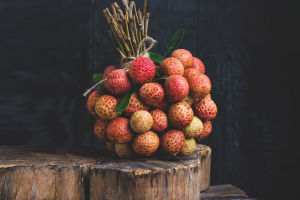Chocolate pralines are true masterpieces in the world of desserts, artfully combining rich chocolate with a variety of sumptuous fillings to create a truly intoxicating taste experience.
Whether it’s the crunch of nuts, the silkiness of nut pastes, or the fragrance of fruit fillings, chocolate pralines have captivated food lovers around the globe with their unique textures and rich flavors.
Chocolate pralines are more than just a delicacy; they are a cultural emblem, encapsulating the essence of history, craftsmanship, innovation, and tradition.
The history of chocolate pralines dates back to the 17th century, with their origins in France. These exquisite treats quickly became a staple at high-society banquets, where chocolate, then a precious luxury, was often blended with other expensive ingredients such as almonds, hazelnuts, or spices to create pralines for entertaining guests.
By the early 19th century, Belgium had emerged as the epicenter of chocolate making, and pralines became more popular and refined as chocolate-making techniques advanced.
In 1912, Belgian chocolatier Jean Neuhaus invented a new kind of chocolate bonbon—a filled chocolate shell—that not only elevated the taste experience but also added a touch of visual luxury.
Over time, the production of chocolate pralines has evolved into a sophisticated art form, becoming an integral part of modern dessert culture.
Crafting chocolate pralines is a delicate art that requires skill and creativity. The most critical step in the process is tempering the chocolate for the shell. This process must be handled with precision to ensure that the final product has the perfect gloss and an ideal texture.
Tempering involves heating the chocolate to a specific temperature and then cooling it rapidly before reheating it to an optimal temperature, which allows the chocolate to form a uniform crystal structure as it solidifies, giving it a smooth texture and a rich, consistent taste.
The next step is the filling. There are numerous varieties of fillings, ranging from traditional nut pastes to innovative fruit jams and spice mixtures. The choice of filling is crucial as it must complement the chocolate shell, creating a harmonious taste experience.
Once the filling is prepared, it is injected into the already-formed chocolate shells, which are then sealed with an additional layer of chocolate. This entire process demands a delicate touch and precise temperature control.
Equally important is the decoration of the pralines. Chocolatiers often use techniques like drizzling chocolate lines, adding icing, or applying edible gold foil to enhance both the visual appeal and hint at the flavors inside.
The diversity and innovation in decoration further elevate the artistic value of pralines, making them treasures in the dessert world.
Chocolate pralines come in a wide variety of types, largely determined by the ingredients used for the filling and the method of crafting the shell. For instance, nut pralines are among the most classic, typically featuring almonds, hazelnuts, or walnuts as fillings.
These pralines are distinguished by their rich, nutty taste, and sometimes a nut paste is added to create a smoother texture.
Fruit pralines, made with fruit jams or dried fruits encased in chocolate, offer a refreshing contrast of flavors. Commonly used fruits include raspberries, oranges, and strawberries, with the sweet and tart fruit flavors balancing the richness of the chocolate for a unique taste experience.
Chocolate pralines are not merely desserts; they are symbols of culture. In Europe, particularly in Belgium and France, pralines are considered an elegant gift, often given during holidays, weddings, and other significant occasions.
They represent sweetness and luxury, reflecting the giver’s thoughtfulness and taste. In the United States, pralines are closely associated with Valentine’s Day.
Every February 14th, beautifully decorated pralines are purchased as tokens of love, with the sweetness of the chocolate symbolizing the beauty of romance, and the hidden fillings representing the surprises and special moments shared between lovers.
From their long history to their exquisite craftsmanship, from their diverse varieties to their broad cultural significance, chocolate pralines hold a special place in the global culinary landscape.
For those with a sweet tooth, pralines are an irresistible temptation, and for chocolatiers, they offer a perfect canvas to showcase their creativity and skill.


